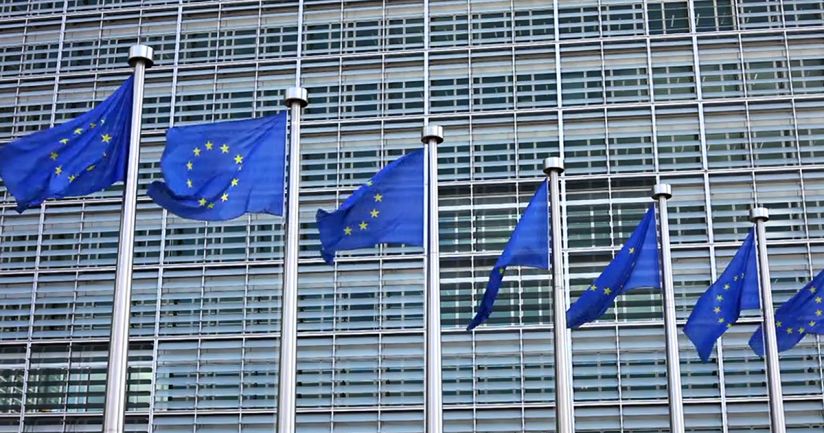Financial Times - The ECB’s three Ts are key to avoiding a new euro crisis

Opinion published online in the Financial Times (ft.com) on 22 December 2022
By Michala MARCUSSEN, Group Chief Economist
The surge in energy prices has opened new divides among eurozone states.
The economic geography of the euro area is often framed in terms of a “core” and a “periphery”, with sovereign bond yields capturing the hierarchy of public debt sustainability.
While this financial market differentiation is considered desirable by some to motivate the periphery to engage reforms and reduce public debt levels, the need to tame the highly procyclical nature of bond markets was a lesson hard learned during the European debt crisis of the early 2010s.
Europe’s present day energy crisis has opened new divides, characterised by member states’ respective shares of energy intensive industries and by their degree of dependency on fossil fuels.
On these energy metrics, Germany and Italy fall into a similar grouping, but similarities stop here. Italian households spend a higher share of income on energy than their German counterparts. And Italy’s high share of very small companies may arguably also be a disadvantage. Germany and Italy, moreover, still sit at opposite ends of the bond yield hierarchy.
Ensuring that Europe’s energy geography does not further fragment the region has already motivated several joint initiatives, to fill gas storages, engage energy savings, secure supply and limit price volatility.
However, while EU initiatives do include some financial solidarity, the bulk of measures to protect households and business have been financed at the national level and with significant disparity of design. Germany tops the list in terms of euros made available, while France ranks high on price regulation measures. This later factor is particularly visible on inflation, with headline consumer inflation in November at 7.1 per cent in France, compared with 11.3 per cent in Germany and 12.6 per cent in Italy.
With the European energy crisis unlikely to be quickly resolved, there is concern that such marked difference on fiscal measures could become a source of further fragmentation. And this would be through several channels.
Top of the list is the risk that fiscal support measures will further fan inflationary pressures, pushing the ECB to engage additional monetary policy tightening. It is with good reason that ECB president Christine Lagarde has repeatedly warned that fiscal support measures should meet a three Ts test — “temporary, targeted and tailored to preserving incentives to consume less energy”.
By the European Commission’s count in its autumn forecast, 70 per cent of measures taken in the EU to mitigate the impact of high energy prices for 2022 fell into the “untargeted” category. Significant further monetary policy tightening could unduly tighten financial conditions for some member states. Last week saw Italian bond yields widen as the ECB reinforced its hawkish stance.
The ECB no doubt had such risks in mind in designing its new Transmission Protection Instrument. This yet untested anti-crisis bond-buying instrument would, however, arguably only be used if significant market dislocations occur. The slow grinding costs of “moderately too tight” financial conditions would probably be left unchecked.
Eligibility for the TPI, moreover, includes a look at compliance with the EU fiscal rules, that are due to come back into force in 2024, albeit in a revised form. Note also that the windfall tax gains that many governments initially enjoyed on the back of pandemic-related economic restarts and higher inflation will probably prove short-lived. Member states with high public debt levels could well find that fiscal room will be much reduced in 2024.
A further concern relates to competitiveness. National government’s motivation to support domestic businesses are understandable, both in terms of protecting competitiveness and in preventing relocation to countries such as the US.
Commission president Ursula von der Leyen recently called for the EU to adapt its state aid rules in response to the US subsidy package for green energy. Several member states, including France, Italy and Spain have called for more joint EU financing. The targeted and conditional model of the Next Generation EU fund for the pandemic recovery offers a good model.
A final point relates to the sheer uncertainty surrounding Europe’s energy markets in a crisis that seems unlikely to find a quick solution. For companies, such uncertainty is set to hold back investment plans. Monetary policy tightening may well be the right choice faced with high inflation, but this is the first time the ECB has increased rates this aggressively.
The ECB is also set to shrink its balance sheet at a much faster pace than the US Federal Reserve, primarily due to the paying back of targeted longer term refinancing operations (TLTRO) over the course of 2023. The latest round of TLTROs date from the pandemic and sought to stimulate bank lending to the real economy.
With Europe probably facing a prolonged energy crisis, the three Ts of the ECB are not just a mantra, but a condition to avoiding a new euro crisis.
-
 Michala Marcussen
Michala MarcussenChief Economist and Head of Economic and Sector Research for the Group